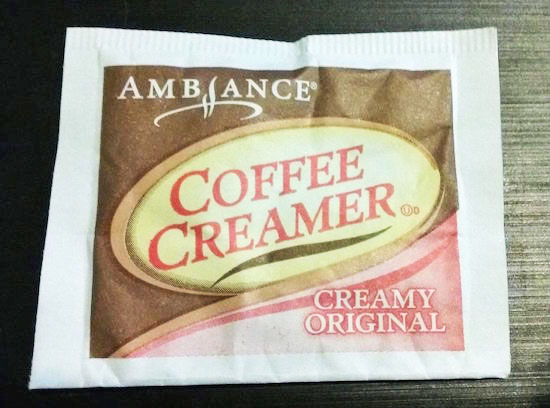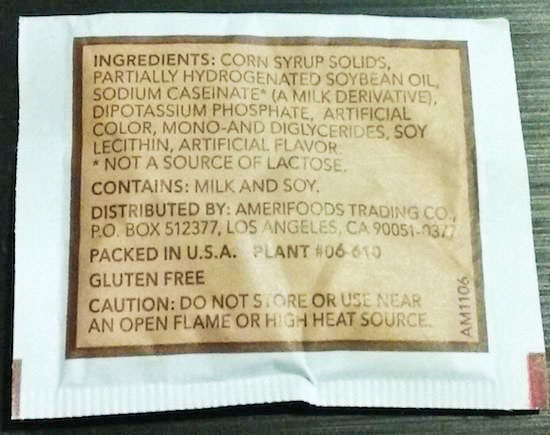|

by Pedro Aquila
February
27, 2017
from
WakingTimes Website

When a person attempts conversation about how something
causes
cancer, they are often met with the dismissive response "but
everything causes cancer."
They are right, in a way.
Almost everything does
cause cancer, yet it is possible to avoid.
This article can be a resource for avoiding,
It only scratches the
surface, but this should be a perfect introduction for someone who
is unaware that many things are too toxic to tolerate.
1. Chemicals
in Food
A. GM, pesticide
contaminated soy is linked to endocrine disruption and cancer
As you may have
heard, the pesticide
RoundUp or glyphosate is an
enemy to public health in several ways, but did you know
many soy products are contaminated with it, and can cause
endocrine disruption and cancer?
Genetically
modified soybeans are grown in great abundance, and the
result is cheap, plentiful soybean oil. The soybean oil is put
into just about every processed food product you can think
of, and it often contains the pesticide it is genetically
modified to be resistant to.
Have you ever
heard of doctors prescribing anti-depressants, referencing
a "chemical imbalance" as the cause of depression?
Well endocrine
disruption, hormonal imbalance from chemicals, is one true cause
of "chemical depression," so avoiding them can be a critical
decision in securing emotional health.
What's more,
the small amounts of glyphosate found in soy products interact
with a phytoestrogen in soybeans, creating a reaction that has a
more potent endocrine disrupting effect.
A 2013 paper
published in the journal Food and Chemical Toxicology says:
"Glyphosate-based
herbicides are widely used for soybean cultivation, and our
results also found that there was an additive estrogenic
effect between glyphosate and genistein, a phytoestrogen in
soybeans.
However,
these additive effects of glyphosate contamination in
soybeans need further animal study."
B. Artificial Coffee Creamers
This article
could choose any number of processed foods to expose the
toxicity of. Let's just choose one: artificial coffee creamer.
This is an
artificial creamer sold under the brand "Ambiance."

It contains
these chemicals:

"Corn syrup
solids" are in the same vein of unhealthy as high fructose corn
syrup, partially hydrogenated soybean oil is one of those health
damaging soy products, dipotassium phosphate is a common
additive to coffee creamer
that is linked to health problems
written about in academic papers, and the list goes on.
2. Body Care Products
A. Aluminum in Deodorant
Breast and skin
cancer, Alzheimer's, endocrine disruption, and other health
problems are strongly linked to the use of "body care" products.
For example,
aluminum compounds in antiperspirant/deodorant are linked to
Alzheimer's. Endocrine disruptors are even ending
up in water supplies.
The way body
care products can cause health problems is well summarized
in a 2009 paper titled, "Underarm antiperspirants/deodorants
and breast cancer":
"An
extensive number of cosmetic products are applied topically
on and around the human breast on a daily basis, often
multiple times a day, including not only underarm anti-perspirant/deodorant
products but also body lotions, body sprays, moisturising
creams, breast firming/enhancing creams and suncare
products.
These
products are not rinsed off but left on the skin, allowing
for continuous dermal exposure, absorption and deposition
into underlying tissues, which may be further increased by
abrasions in the skin created by shaving [2,3,5–7].
The extent
to which chemicals absorbed by this route escape metabolism
remains unknown, but they would certainly escape the
systemic metabolism to which orally derived chemicals would
be subjected [5–7]."
An article by
Dr.
Edward Group offers an alternative to toxic
deodorants:
"Aluminum-free deodorants should consist of essential oils
and all natural ingredients.
Aluminum
free alone may not be enough as some aluminum-free
deodorants are still high risk, according to the
Environmental Working Group, and can contain chemicals like
triclosan and propylene glycol.
Triclosan is perhaps a more fierce endocrine disruptor
than propylene glycol, so try to avoid it.
This article contains a recipe for making your own deodorant
using natural ingredients like baking soda and coconut oil."
B. Chemical sunscreen can cause
endocrine disruption and cancer
You may have
heard of sunscreen actually causing skin cancer and hormone
disruption.
Oxybenzone is a
main ingredient in many sunscreens. Luckily there are
alternatives.
Two different
types of sunscreen are well summarized
by Wellness Mama:
"There are
two ways that a sunscreen can protect the skin from sun
damage: with a mineral barrier or a chemical one.
Mineral
sunscreens typically include ingredients like zinc oxide or
titanium dioxide, which create a physical barrier to protect
the skin from the sun.
Chemical
sunscreens use one or more chemicals including oxybenzone,
avobenzone, octisalate, octocrylene, homosalate and
octinoxate."
In one case, a
woman who blogged about the value of body care products and
sunscreen actually ended up with skin cancer.
An ABC headline
reads:
"Woman 'Shocked' to Develop Skin
Cancer Despite Sunscreen Vigilance."
From that
article:
"Annie
Tomlin is an expert beauty editor who is known for telling
her millions of readers about the
importance of sunscreen, so when a red patch appeared on
her hairline and wouldn't go away, she knew something wasn't
right.
As it grew
and grew I thought,
'this isn't normal,' she said.
A biopsy
revealed that Tomlin had basal cell carcinoma.
It's the most
common kind of skin cancer. Tomlin said she was "shocked" by
the diagnosis in November.
'I'm religious about sun
protection. I wore it every day as a kid,' she said."
C. Baby Powder (talcum)
Pharma giant
Johnson & Johnson's baby powder causes cancer. They have
knowingly sold it for years, and over a thousand women are suing
them.
Well
summarized by James Corbett:
"Oh,
really, this is getting to be too much! What do you want me
to say? That there are now
more than 1200 women suing J&J for covering up the
talcum/cancer connection?
That one of
the jurors that awarded the $72 million
told the St. Louis Post-Dispatch that "They [J&J] tried
to cover up and influence the boards that regulate
cosmetics"?
That J&J
have spent over $5 billion in legal fines and penalties over
the last three years, including a $2.2 billion penalty for
illegally marketing an anti-psychotic to children and the
elderly, a $2.5 billion penalty for
selling faulty artificial hips and $120 million in
compensation to women who suffered organ damage and constant
pain from the company's
horrific, internally eroding vaginal mesh inserts?
OK, there.
I said it.
What's not
to like about this company and its business prospects?
Nothing, that's what!
Just look at this:
Last
week Johnson & Johnson's pharmaceutical arm, Janssen
Biotech, agreed to license a potential prostate cancer
treatment from Tesaro for $50 million.
The bold
move will insure that J&J remains at the forefront of
biopharmaceutical research and development.
I'll admit
it. The
internal J&J memo that proves that Johnson & Johnson
knew of the baby powder/cancer linkage in 1992 looks bad. It
does. And the fact that the same memo also recommends
targeting black and Hispanic women (including an "adult
Hispanic media program" and an "adult black print effort")
looks bad. It does.
But look at
the numbers. Look at them!"
3. Cancer Causing, Health
Damaging Drugs
A. Diethylstilbestrol (DES)
In the past
century, bad drugs have led to deformed children, cancer, birth
defects, and more.
One was called
Diethylstilbestrol, or DES: pregnant mothers were encouraged to
take it, and infants exposed to it in utero were born with many
kinds of health problems.
Reading from
Wikipedia:
"Human
exposure to DES occurred through diverse sources, such as
dietary ingestion from supplemented cattle feed and medical
treatment for certain conditions, including breast and
prostate cancers.
From about
1940 to 1971, DES was given to pregnant women in the
mistaken belief it would reduce the risk of pregnancy
complications and losses.
In 1971,
DES was shown to cause
clear cell carcinoma, a rare vaginal tumor in girls and
women who had been exposed to this drug
in utero.
The United
States
Food and Drug Administration subsequently withdrew DES
from use in pregnant women.
Follow-up
studies have indicated that DES also has the potential to
cause a variety of significant adverse medical complications
during the lifetimes of those exposed."
DES Action.org
is a great resource for learning about this.
B. Thalidomide
Another bad
drug of the past was Thalidomide, one of the most obscene
stories of a bad drug possibly ever seen.
Pregnant
mothers were also encouraged to take Thalidomide in the post
WWII era, and it causes extremely severe deformities and health
problems.
This is a video
about Thalidomide:
Despite all of
that, Thalidomide is still sometimes prescribed
to treat leprosy and cancer.
C. MiraLAX
Today, bad
drugs have less of an immediate, noticeable effect:
they often
take time for the damage to become noticeable, which makes it
very difficult to pin down chemicals as the definitive cause of
an illness.
Take MiraLAX
for example.
According to an article
from the Mind Unleashed titled "Laxative Given to
Toddlers Linked to Neuropsychiatric Events: MiraLAX Exposed by
Parents":
"MiraLAX
is an over the counter laxative that has been central in
pharmaceutical practice for a few decades.
It is a
petroleum product: polyethylene glycol. A similar chemical
is used in anti-freeze, ethylene glycol. Small amounts of
highly toxic ethylene glycol
are found in MiraLAX as well.
Originally
intended for adults, today toddlers and young children are
given it freely. Doctors "literally give it like water,"
as described by Dr. Scott W. Cohen, a pediatrician in
Beverly Hills, California.
Parents are currently
raising awareness of it's danger: this has been a long time
coming.
It is
associated with altering emotions toward "darkness,"
paranoia and anxiety, anger, and many other symptoms.
The FDA
quietly acknowledged it's danger as early as 2011, as you
can see here."
D.
Vaccines during pregnancy
Today, mothers
are still being poisoned during pregnancy.
Mothers are
encouraged to get flu shots, which is probably not good for the
baby, if you understand
what is in the vaccine. People are
trying to quantify if vaccines during pregnancy are linked to
miscarriage, stillbirth, and other problems.
Summarized by Kelly Brogan,
MD:
"I dare say
that the modern woman has handed over her inner compass.
It's as if
we came from generations of master chefs - natural giants in
the kitchen, using our senses and instincts to guide us
toward nourishing preparations - but we have been recently
convinced through the promise of technology and corporate
prowess that processed food is more reliable, nutritious,
and beneficial.
We've been convinced that Hamburger Helper
is better for our families than a homemade Bolognese.
The
Medicalization of Pregnancy and Birth is no Exception
In this
way, women have permitted doctors and pharmaceutical
companies privileged access to their fierce and primitive
drive toward protecting a pregnancy.
They have been made to
feel fear, convinced that they need the support of the
apparatus of allopathic medicine to get them through this
perilous trial."
"Clearly,
as a perinatal practitioner, I have concerns with even one
vaccine administration in pregnancy.
However, that women in
2009 were subject to a completely and entirely unstudied
combo pack of interventions, the package insert of which
clearly states,
'It
is also not known whether these vaccines can cause fetal
harm when administered to pregnant women or can affect
reproduction capacity'
Goldman, the
researcher and author of the aforementioned study, determined
the following:
"Spontaneous abortion (miscarriage) and still birth rates
determined to be proximally associated to vaccine delivery
were analyzed by Moro et al for the flu seasons of 1990-2009
finding 1.9/million or an average incidence of 1.2 per year.
From this
average to the first 5 months of the 2009/10 season in which
women were recommended to receive both the typical flu
vaccine and the H1N1, there were 57/million fetal losses
reported.
Using a
capture-recapture statistical tool that allows for
researchers to control for the inherent limitations of a
reporting system, 174 cases from VAERS and 67 cases from
NCOW were pooled to identify an ascertainment-corrected rate
of 1/1695 (590/million).
This
adjustment reflects the fact that VAERS is a gross
underestimation of the actual incidence of adverse events -
in this case representing only 13% of the vaccine-related
fetal losses."
E. Aluminum in Antacids
People wonder
why they are poisoned with aluminum: among all the commonly
known sources, antacid drugs are one of the greatest sources.
Antacids given
to people with stomach problems contain
aluminum hydroxide, linked to Alzheimer's and all the usual
symptoms of aluminum poisoning.
One can look
at this
2003 paper titled "Aluminum in over-the-counter drugs:
risks outweigh benefits?." Reading from it:
"It is now
commonly acknowledged that aluminum toxicity can be induced
by infusion of aluminum-contaminated dialysis fluids, by
parenteral nutrition solutions, and by oral exposure as a
result of aluminum-containing pharmaceutical products such
as aluminum-based phosphate binders or antacid intake.
Over-the-counter antacids are the most important source for
human aluminum exposure from a quantitative point of view.
However, aluminum can act as a powerful neurological
toxicant and provoke embryonic and fetal toxic effects in
animals and humans after gestational exposure."
Conclusion
As you can see, so
many things do cause cancer: just about everything artificial,
allopathic, and born from corporations we should never trust to look
out for our wellbeing.
Alternatives exist and are thriving, from
mineral based sunscreens, to aloe vera for the skin, instead of
toxic skin care products. It must be
understood how the FDA and regulatory agencies allow this: here's an
example of how a revolving door operates.
FDA commissioner
Margaret Hamburg had to resign over a
racketeering scandal.
Her husband's hedge fund Renaissance
Technologies owned stake in Johnson & Johnson, and that might
explain why the FDA allowed them to continue selling a litany of
toxic products.
That's just one
example of how regulatory authority works. We have the research
available to us, and can learn for ourselves what is toxic and what
isn't.
Please share this
with any person who needs a starting point in researching the
toxicity of products before they use them.
|




